People
‘What Happens When You Don’t Know What’s Going to Happen?’: Tavares Strachan’s New Performance Illuminates Histories Once Left in the Dark
The artist's latest exhibition, "In Plain Sight," is on view at Marian Goodman in London.
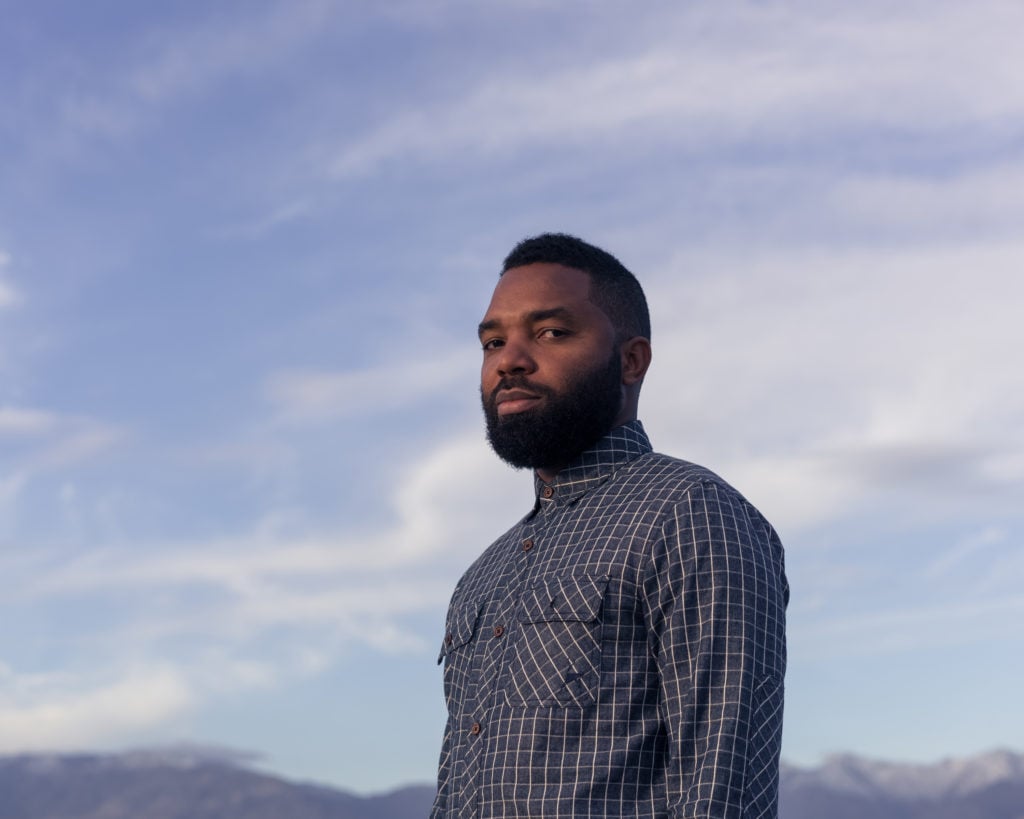
The artist's latest exhibition, "In Plain Sight," is on view at Marian Goodman in London.

Naomi Rea

I am thrust into darkness as I enter Tavares Strachan’s latest exhibition at Marian Goodman Gallery in London.
My fellow masked companions and I funnel awkwardly into a central corridor, where we are presented with a silent choice. Straight ahead hovers one of the Bahamian artist’s ethereal neon skeletons, a left turn leads to a room filled with collage paintings centered around a mysterious glass cube, and to the right is a room clad floor-to-ceiling with pages from Strachan’s ongoing research project into marginalized historical knowledge, The Encyclopedia of Invisibility.
There’s a quiet shuffling as each of us makes a choice, with some preferring to remain suspended in the middle.
For a moment I feel naked, acutely aware of the absence of the social shield usually provided by my mobile phone, which I had to place inside a pouch at the door. Then we all twitch as we’re interrupted by a singing man, who strolls into the space. That’s my first indication that this is no ordinary gallery show.
The rest of the exhibition is punctuated with similar moments of tension as the visitors move around the space, hyper-aware of their own bodies in relation to others—much like the neon skeleton, which was modeled after the blind Cuban ballerina Alicia Alonso—both to maintain social distancing, and to best follow the performers along a breathtaking musical and narrative experience.
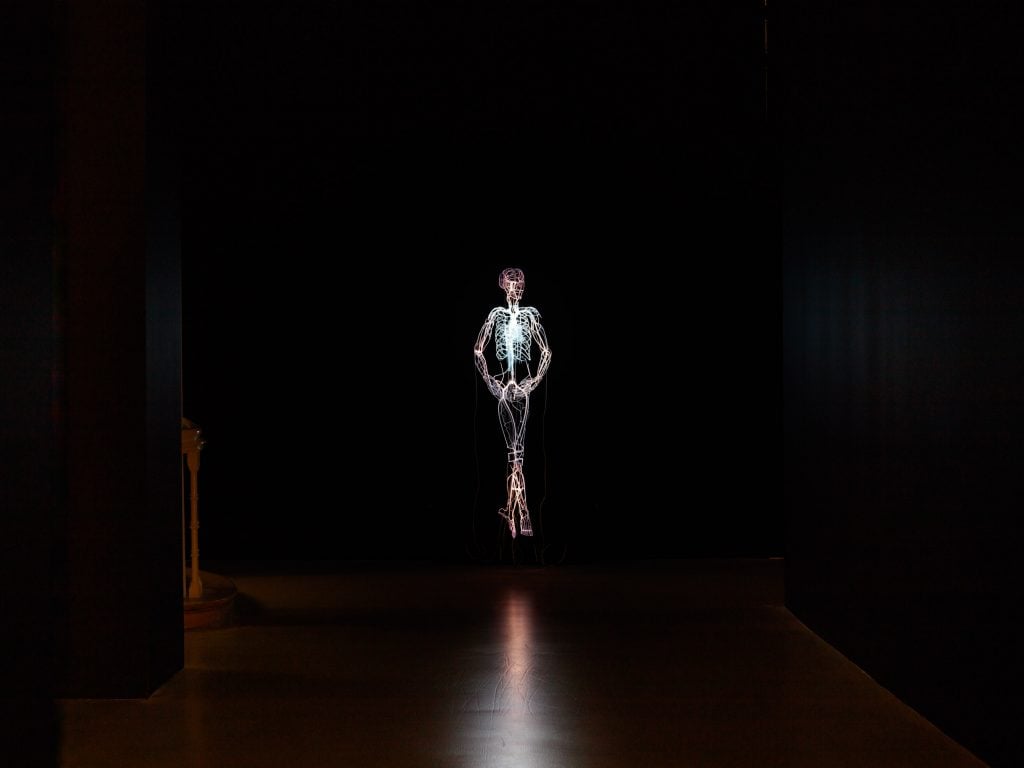
Tavares Strachan, Alicia Alonso (2020). Photo by Lewis Ronald.
Speaking over Zoom from his studio in New York, Strachan tells me that I was supposed to feel as disarmed as I had.
“Expectations are so important, because I think they are, materially, where prejudice comes from,” Strachan says. “You develop prejudice because you know what is ‘supposed’ to happen next. So the question for me is, What happens when you don’t know what’s going to happen next?”
It’s a question that is ripe for interpretation in 2020, but I won’t spoil what happens in the course of Strachan’s 45-minute piece of immersive theater.
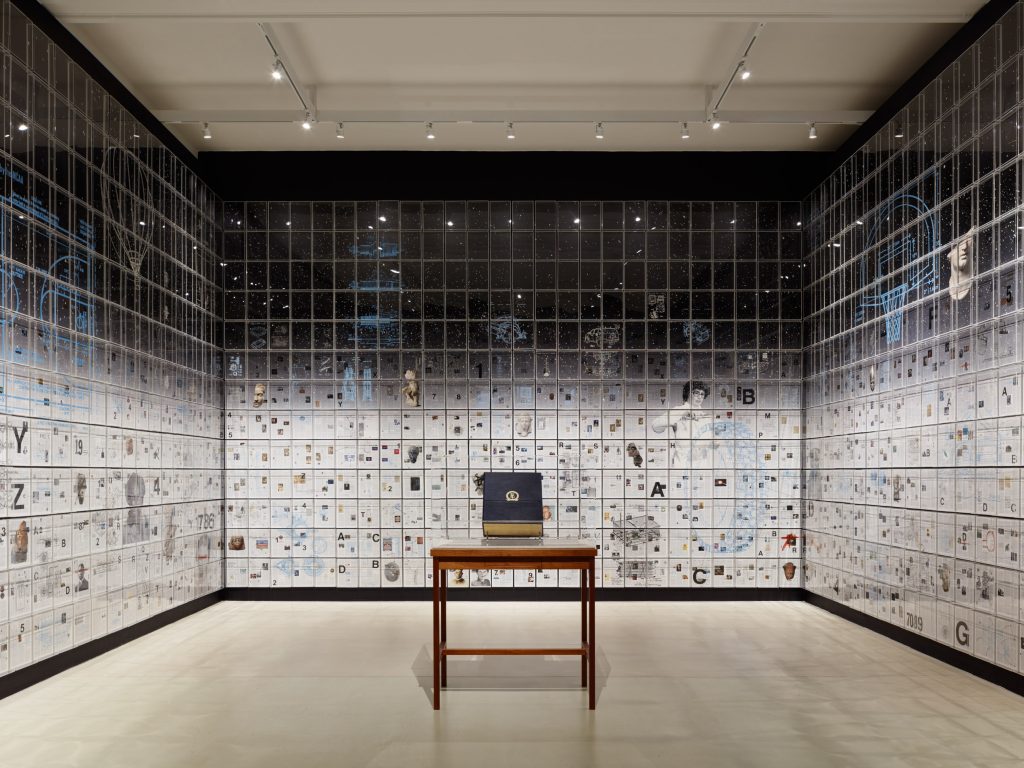
Tavares Strachan, EIGHTEEN NINETY (2020). Photo by Lewis Ronald.
The linchpin for the exhibition is Strachan’s research for the Encyclopedia of Invisibility, a project he has been working on for about eight years and which to date comprises some 15,000 entries. The starting point for the scattered and non-linear narrative is the story of the African American explorer Matthew Henson, who was the first person to reach the North Pole, despite most history books marginalizing Henson in order to focus on the white explorer he traveled with, Robert Peary.
“The most fascinating entry to me is the Matthew Henson story because it’s the one that drove all of this research to begin with,” Strachan says. “It was the original kind of ‘aha moment.’”
The exhibition also sheds light on other segments of history that have been overlooked in dominant Western historical narratives. This includes the story of Katherine Johnson, a Black mathematician and NASA employee whose calculations were critical to the success of the first manned spaceflight in the US, and Henrietta Lacks, another African American woman whose cancer cells—taken without her consent—were used to create the first immortalized cell line, which is still used in medical research today.
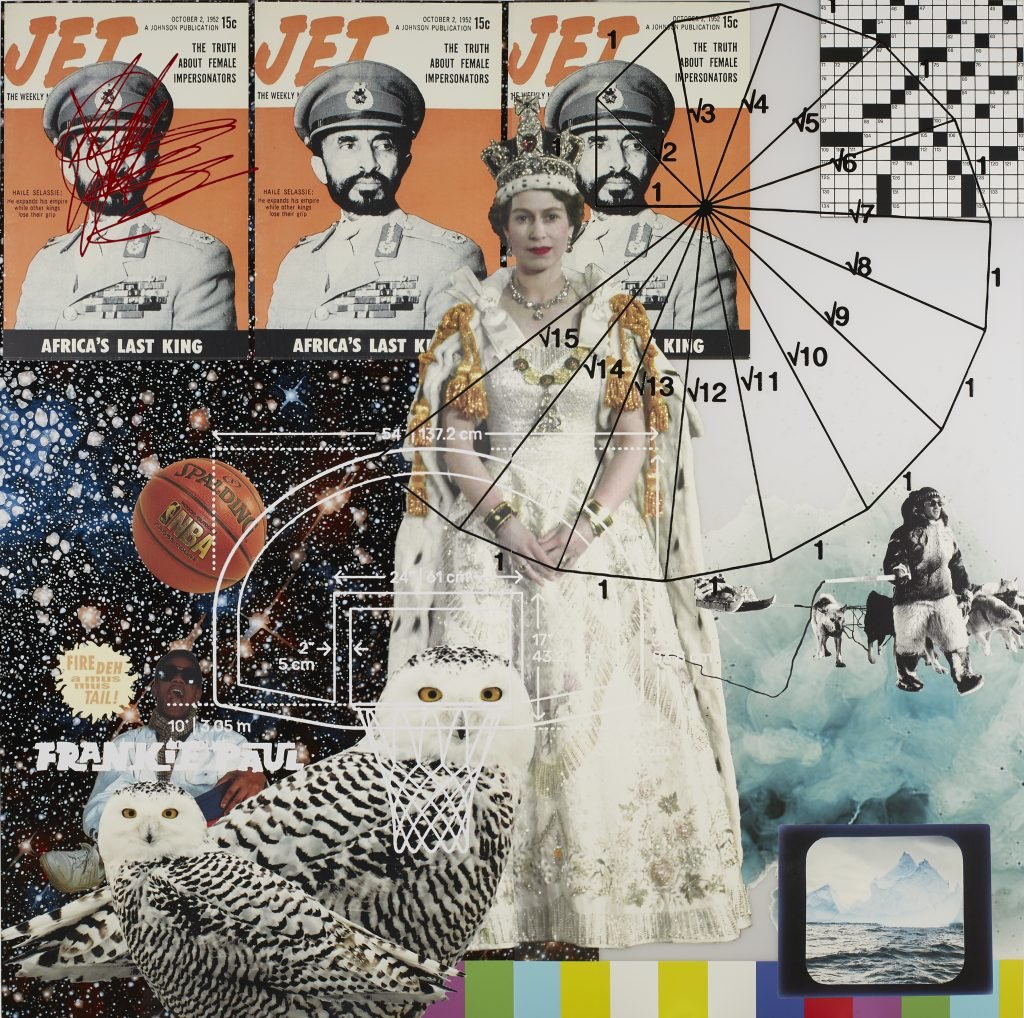
Tavares Strachan, Every Knee Shall Bow (2020). Photo: Jurate Veceraite. Courtesy of the artist and Marian Goodman Gallery.
The show feels especially poignant this October, which is Black history month in the UK, and comes amid growing calls to incorporate Black British history into the national curriculum, which largely tells a one-sided story of British Imperialism as that of conquest and victory. Following the killing of George Floyd in the US, there has also been a swell of Black Lives Matter demonstrations in the UK that ignited a fierce debate about what figures are celebrated in our built environment, from street names to public monuments.
“I think there’s a fundamental lack of clarity surrounding colonialism in general,” the artist, whose native Bahamas is a former British colony, says. “There is a kind of caricature that I think represents colonialism as a demon. I don’t think that’s what colonialism is. I think it’s more subtle, and a lot more sophisticated in its aggression, and I think things like school represent that kind of systemic aggression.”
For many, the events of 2020 have felt incredibly surreal. But the outbreak of a deadly virus that disproportionately impacts communities of color, and the global uprising in response to the killing of Floyd, followed years of systemic brutality. “I think that level of surreal existed prior to this moment for a lot of people,” Strachan says.
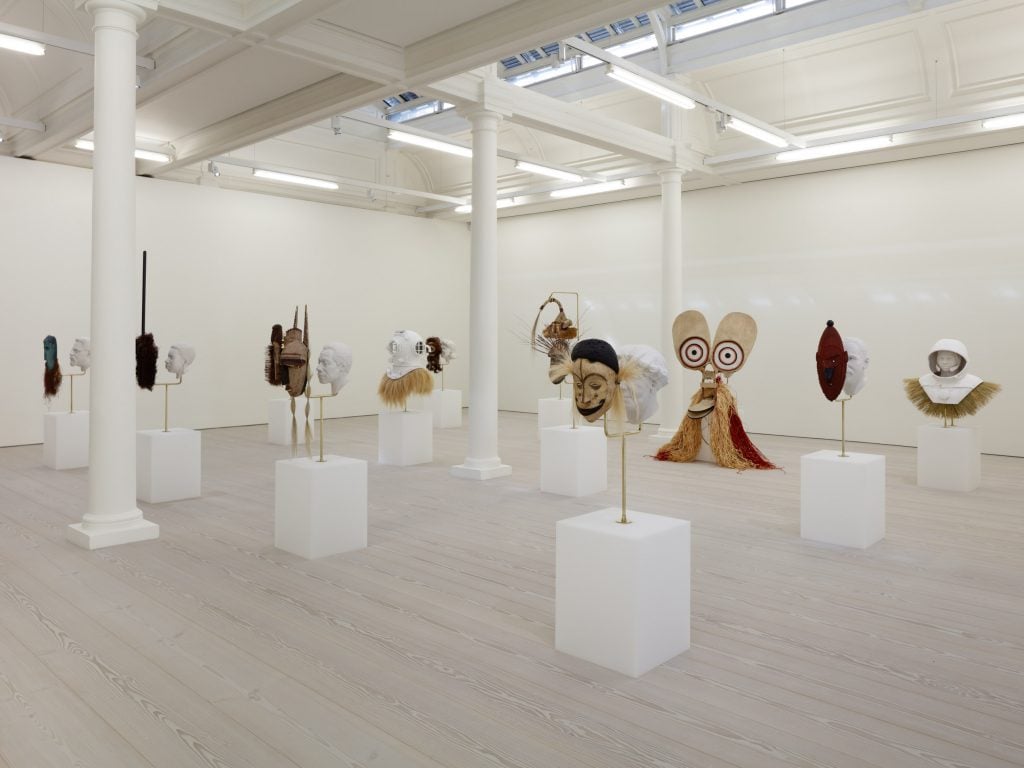
Installation view, Tavares Strachan, “In Plain Sight” at Marian Goodman Gallery, London. Photo by Lewis Ronald.
All the same, it has been an “emotionally tough” time for the artist. “A lot of the people who are being profoundly affected by this in the most extreme ways are the frontline workers who happen to oftentimes be working-class folks or people of color. Like my cousins, my aunts, my uncles, my family,” he says.
In the exhibition, the musical crescendos are loaded by this historical moment as well as the weight of centuries of historical injustices laid bare in the Encyclopedia. I confess that, as it all vibrated through me, I cried into my face mask, and the artist says that he had that same visceral reaction to the work. “I think the music allows you to be more permeable in terms of forming a deeper connection with the material,” he says. “When everyone is a part of the sound, no one is really ‘Other’ in that moment.”
“Tavares Strachan: In Plain Sight” is on view through October 24 at Marian Goodman Gallery in London.